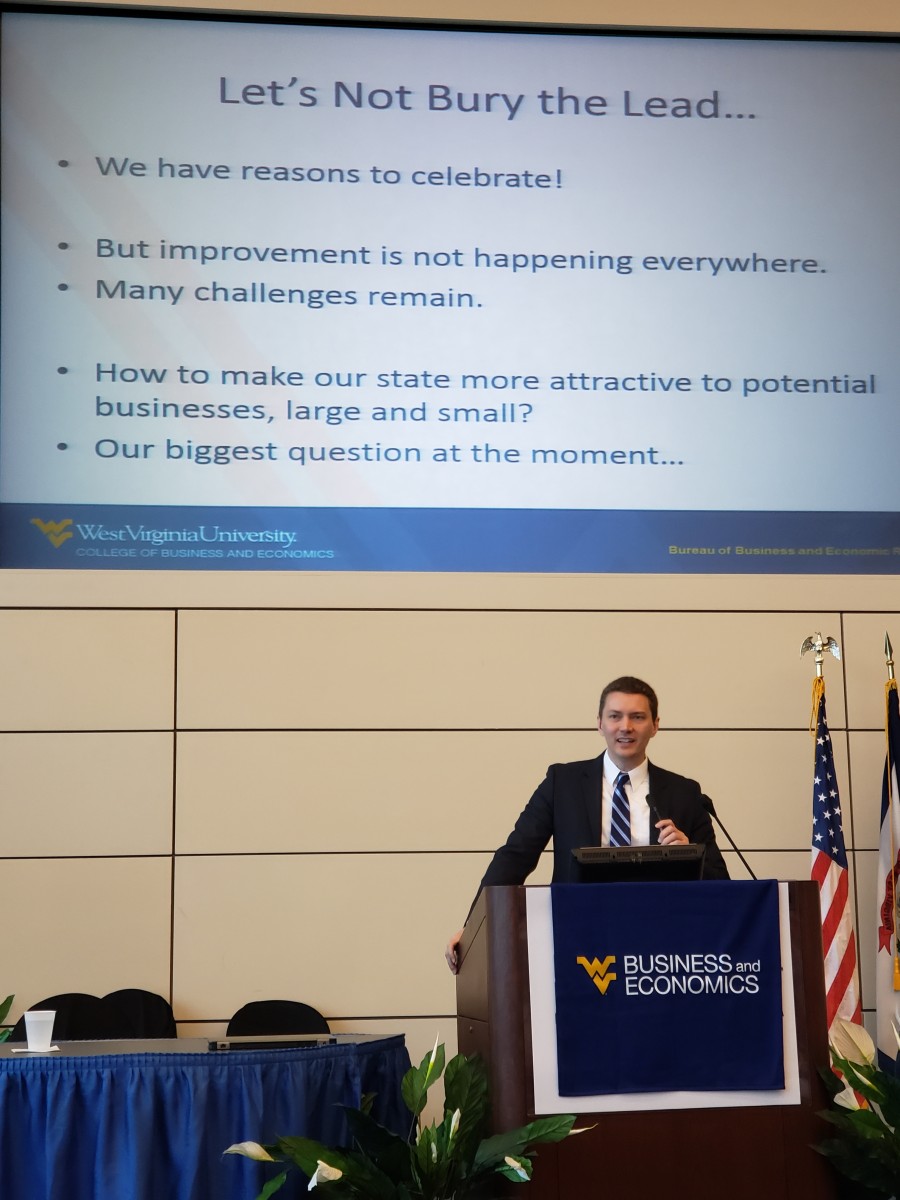FAIRMONT — Area business leaders gathered Tuesday morning at the Mollohan Research Center for WVU’s North Central West Virginia Economic Outlook Conference.
Bureau of Business & Economic Research Director John Deskins said the eight-county region’s economy – including Monongalia, Preston, Marion and Harrison – continues to lead the state. But statewide, the economy is still heavily dependent on mining and industrial diversification is crucial.

The new talking point, he said, is, “We are growing again. We have good things happening in these eight counties. But now we really need to focus on getting this prosperity to be more widely distributed across our state geographically.”
Narrowing the focus to the four counties, he said they saw 8,000 jobs added from 2010 through the middle of this year – 2,500 since 2016. Through 2023, Mon’s job growth will be the highest of the four, hitting about 1.2 percent, and the only one of the four to exceed the national average of about 0.7 percent.
Looking statewide, he said, the coal downturn made it clear, “We desperately, desperately need strength and growth in other sectors of the economy, so when one sector suffers, for whatever reason, we have other sectors that are growing to fil in that gap.”
He added, “The bad news is, I don’t know how we diversify. … Nobody really knows for sure how to diversify the economy until we give it a try.”
Diversification will require two things: entrepreneurship, promoting small business development and growth; and improving our human capital — businesses won’t be drawn here if we lack an educated, well-trained, healthy and drug-free workforce.
“Entrepreneurship is messy,” he said. Most new businesses will fail. They will find out what doesn’t work. “But the businesses that succeed, that’s how we find the right industrial based for our specific economic circumstances.”
National outlook
Raymond Owens, senior economist and policy advisor with the Federal Reserve Bank of Richmond, said potential economic growth reflects a combination of work effort growth and productivity growth.
Work effort – aggregate hours worked – has been declining as Baby Boomers are retiring at a rate of 10,000 per day, but, “We’re still creating jobs like mad.”
The U.S. has seen about 200,000 jobs per month created since the end of the Great Recession. “That’s a phenomenal amount of job growth.”
Economists believe, he said, the current 3.7 percent unemployment rate is unsustainable and will bottom out and then gradually rise into 2020-2021.
One other issue is that growing so many jobs depletes the labor market, which drives up wages.
There are two sides to that, he said. One, household spending makes up 70 percent of all spending, and it’s going strong as families see bigger paychecks.
“When households are spending as fast as they’re making it, or at times spending it even faster than they’re making it, it typically means good economic times are ahead,” he said.
But higher wages also drive up inflation. The Fed’s Federal Open Market Committee looks at 2 percent inflation as its goal. To keep it at that level, the FOMC is looking at adjusting short-term interest rates.
Right now, the rate is about 2 to 2.25 percent, he said. The FOMC may tweak that up .25 percent in December. In the out years, it may hover around 3 percent from 2019 through 2021, give or take a quarter percent.
Tweet David Beard @dbeardtdp Email dbeard@dominionpost.com




